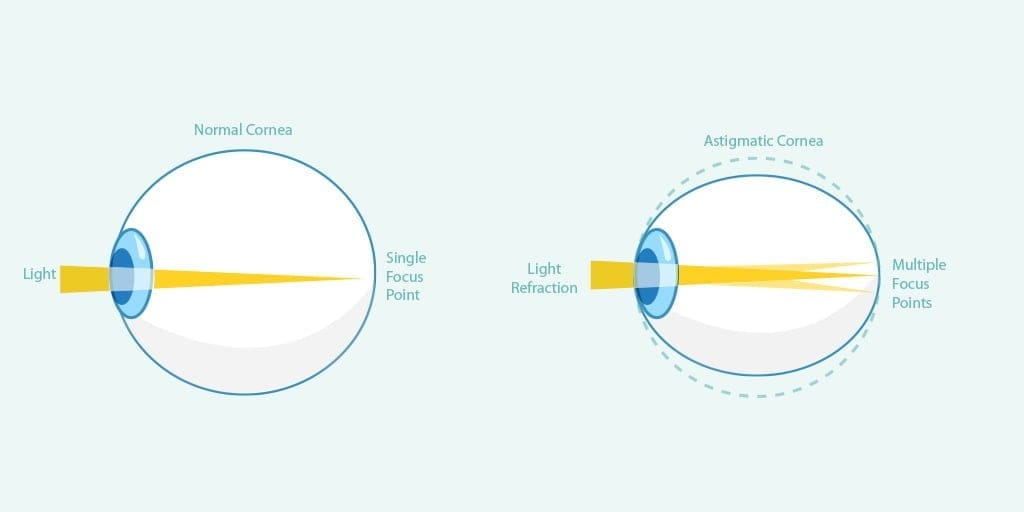Most are aware of nearsightedness and farsightedness when it comes to how our eyes focus, but there still are a lot of questions surrounding Astigmatism. While the name makes it sound serious, it’s a common refractive error that affects a lot of people. What exactly is Astigmatism? Let’s break it down. Here are 5 important facts about this common eye condition and how it is treated.
Astigmatism is caused by an abnormally curved cornea
Astigmatism is a common refractive error where the cornea is abnormally curved (usually shaped like a football) causing blurry vision due to light being unevenly distributed on the lens of the eye. The cornea (the transparent surface of the eye) is normally spherically shaped. This allows light to enter the eye more evenly, making it easier to see clearly.

There’s More Than One Type
- Myopic astigmatism: Light is focused in front of the retina, much like normal myopia.
- Hyperopic astigmatism One or both principal meridians are farsighted.
- Mixed astigmatism is having a mix of both myopic and hyperopic meridians, causing both nearsighted and farsighted symptoms.
Symptoms may be hard to detect
It is possible to have astigmatism and not know it. It can worsen over time if left untreated, so it’s important for children to get eye exams as early as possible. Adults should also get regular eye exams to detect any changes in vision. Here are some symptoms to look out for:
- headaches
- squinting or eye strain
- difficulty driving at night
- blurry vision at different distances

Astigmatism is linked to genetics
Mom and Dad can be to blame for your football-shaped corneas. Astigmatism is a genetic trait, just like other eye characteristics such as eye color that get passed on through generations. Even if you don’t notice symptoms right away, it’s a good idea to get a regular eye exam to monitor changes in vision clarity. One thing to note: Astigmatism is NOT an eye disease and isn’t a threat to your overall eye health. While there are other ways it can develop such as trauma to the eye, it is mostly a trait you are born with.

An Optometrist Can Detect It Early
Are you unsure why your vision is blurred or changed? An optometrist can clear things up for you. Many eye conditions including this can be easily detected through a comprehensive eye exam. Don’t wait until your vision worsens. Make seeing your eye doctor part of your annual health routine. Your eyes will thank you. To learn more about other eye conditions like myopia and hyperopia, check out our other blog entries.

